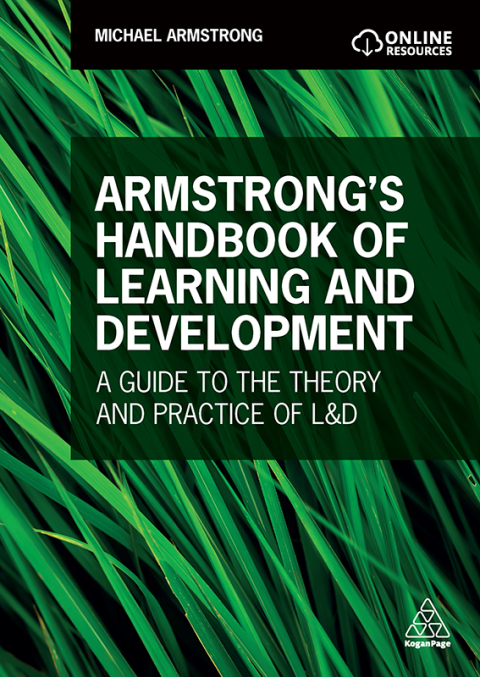Description
Efnisyfirlit
- Cover
- Endorsements
- Titlepage
- Dedication
- Contents
- List of Figures
- List of Tables
- Introduction
- Online resources
- Part One Fundamentals of learning and development
- 1 The basis of learning and development
- Introduction
- Learning and development defined
- Learning and development: A brief history
- The elements of learning and development
- The components of learning and development
- Relationships between L&D and other people management activities
- The ethical dimension
- The state of L&D
- Bibliography
- 2 The context of learning and development
- Introduction
- Stakeholders
- The internal environment
- The external environment
- What’s happening to work?
- Impact of emerging technologies
- Skills
- Government support and interventions
- References
- 3 Learning culture
- Introduction
- Characteristics of a learning culture
- Impact of a learning culture
- Developing a learning culture
- References
- 4 Organizational learning and the learning organization
- Introduction
- Organizational learning
- The learning organization
- Comparison of the organizational learning and learning organization concepts
- References
- 5 Individual learning
- Introduction
- The characteristics of individual learning
- Self-directed learning
- Self-directed learning and the L&D function
- Personal development planning
- Learning to learn
- Lifelong learning
- Continuing professional development
- References
- 6 Learning and development strategy
- Introduction
- Strategic learning and development
- Learning and development strategy
- The nature of L&D strategy
- Formulating L&D strategy
- Setting out the L&D strategy
- Implementing L&D strategy
- Bibliography
- 7 The contribution of learning and development to organizational performance
- Introduction
- The learning impact
- How L&D impacts on performance
- Evidence from research on the link
- Measuring the L&D contribution
- Bibliography
- 8 Learning analytics
- Introduction
- The role and purpose of learning analytics
- How learning analytics works
- Levels of learning analytics
- Benchmarking
- The scope of learning analytics
- References
- Part Two The responsibility for learning and development
- 9 The role of the learning and development function
- Introduction
- The L&D function: activities and purpose
- Organization of the L&D function
- Evaluation of the function
- The role of the L&D professional
- The demands of the role
- References
- 10 The role of the line manager
- Introduction
- The vital role of line managers in L&D
- Supporting line managers
- References
- Part Three The process of learning
- 11 The nature of learning
- Introduction
- The basis of learning
- What makes people want to learn?
- How people learn
- Lessons from neuroscience
- Practical implications of learning theory
- References
- 12 Approaches to learning and development
- Introduction
- Formal and informal learning
- Learning in-the-flow of work
- Blended learning
- Continuous learning
- Connected learning
- Micro-learning
- Adaptive learning
- Agile learning
- Reflective practice
- Learning and development through performance management
- Policy and practice implications
- References
- 13 Learning and development techniques
- Introduction
- Role analysis
- Competency analysis
- Skills analysis
- Job instruction
- Behaviour modelling
- Coaching
- Mentoring
- Facilitating
- Providing feedback
- Learning event techniques
- Content creation
- Content curation
- References
- Part Four Areas of learning
- 14 Workplace learning
- Introduction
- The nature of workplace learning
- Approaches to workplace learning
- Making workplace learning effective
- References
- 15 Social learning
- Introduction
- The nature of social learning
- Social learning theory
- What can be done to encourage social learning
- References
- 16 Digital learning
- Introduction
- The nature of digital learning
- E-learning
- Learning platforms
- Virtual learning environment
- Smartphones and learning apps
- Social media
- Enterprise social networks
- Web searches
- Virtual and augmented reality
- Artificial intelligence (AI)
- Online courses
- References
- 17 Training
- Introduction
- Approaches to training
- Learning areas covered by training
- The justification for training
- Requirements for effective training
- Planning and delivering formal training
- References
- Part Five Planning and delivering learning events
- 18 Identifying learning needs
- Introduction
- Learning needs
- The process of identifying learning needs
- Diagnosis
- Action planning
- Bibliography
- 19 Planning learning events
- Introduction
- Initial considerations
- Criteria for a successful learning event
- Learning objectives
- Deciding who runs the learning event
- Creating content for face-to-face learning events
- Instructional design
- Programming the event
- Selecting and briefing trainers and speakers
- Planning facilities
- Nominations
- Bibliography
- 20 Managing learning events
- Introduction
- Effective learning events
- Setting up the event
- Starting the event
- Running the event
- Closing the event
- References
- 21 Transferring learning
- Introduction
- The nature of the learning transfer process
- The transfer problem
- Factors affecting learning transfer
- Analysing the transfer problem
- What can be done about the transfer problem?
- A learning transfer model
- Another solution
- References
- 22 Evaluating learning events
- Introduction
- The nature of the evaluation of learning events
- Methods of evaluation
- Use of evaluation
- Conducting learning evaluations
- Bibliography
- Part Six Aspects of learning and development
- 23 Leadership and management development
- Introduction
- The basis of leadership and management development
- The nature of leadership and management
- Leadership and management development compared
- Leadership development
- Management development
- Formal approaches to management development
- Semi-formal approaches to management development
- Informal approaches to management development
- The role of the organization
- The role of the individual
- The role of learning and development professionals
- References
- 24 Sales training
- Introduction
- The content of sales training
- Methods of sales training
- Reference
- 25 Apprenticeships
- Introduction
- Apprenticeships defined
- How apprenticeships function
- Reform of the apprenticeship system
- References
- Part Seven Conclusion
- 26 Learning and development trends and issues
- Trends
- Issues
- References
- Author index
- Subject index
- Copyright





